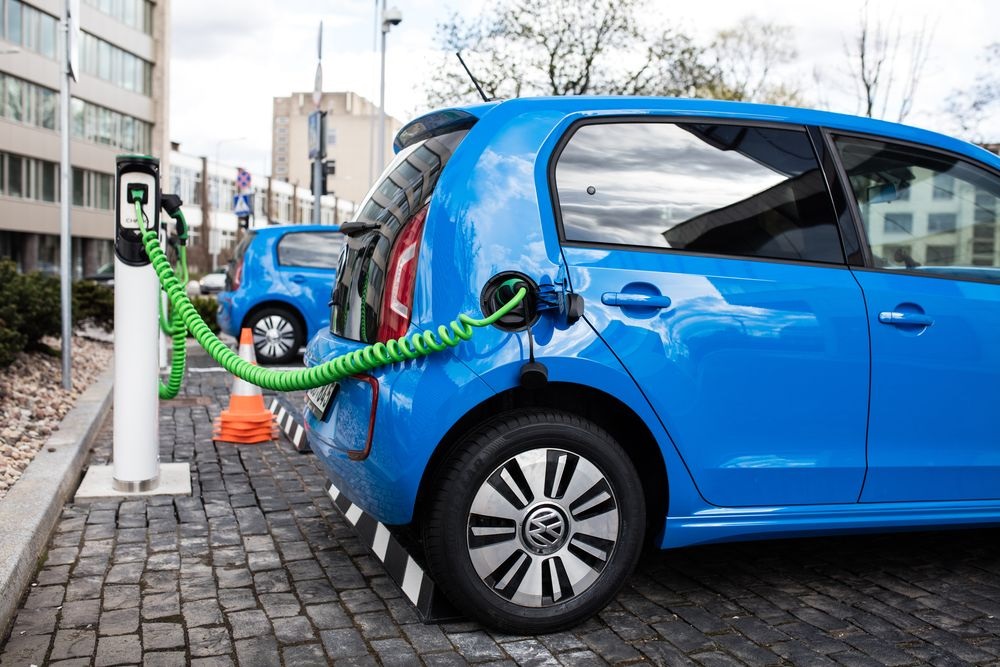By Jaeyoung Jung, R. Jayakrishnan & Keechoo Cho
Abstract
1. Introduction – Sustainable Urban Mobility
The transport sector is responsible for about a third of all greenhouse gas (GHG) emissions in the USA and a fifth of worldwide GHG emissions (Buehler & Pucher, 2011; Ogden & Anderson, 2011). Naturally, reducing carbon-based vehicle emissions and GHG has been a critical issue because of their serious impact on the environment and human health in many urban areas. Two major approaches to address this have emerged in sustainable transportation research: (1) developing energy-efficient technologies and (2) adopting efficient transportation operations. As part of the energy strategy, auto manufacturers are producing alternative-fuel vehicles (AFV) such as hybrid vehicles (HV), plug-in hybrid electric vehicles (PHEV), electric vehicles (EV), and fuel-cell vehicles (FCV) that have zero or significantly reduced vehicle emissions. There is growing interest in EVs because they are considered to be zero-emission vehicles (ZEV) as they use no internal combustion engines (ICE) and are powered by electric motors from battery packs without any local CO and NOx emissions. Nevertheless, other concerns limit EV utilization. These include higher prices of vehicles and cost of the charging infrastructure, shorter driving ranges compared to the range of gasoline vehicles, and the lost productivity when vehicles are idle while battery charging. Even if EVs are not yet considered to be ready to replace ICE vehicles on a large scale, they can certainly be considered as a viable option for many fleet applications that envisage the use of energy-efficient vehicles and require fewer resources to operate than even personal automobiles (Barth & Todd, 2001; Green Car Reports, 2010; Blosseville, Massot, & Mangeas, 2000; FedEx, 2010; Liu & Santos, 2012).
As examples of cities focusing on EV use as a sustainable option, the City of New York has set a goal of having one third of the city’s taxis electric by 2020 (Flegenheimer, 2013) and the Seoul Metropolitan Government in Korea has unveiled its Electric Vehicle Delivery Plan for Seoul, which has set 72,000 EV and hybrid taxicabs as the green car provision target in the near future (Energy Smart Communities Initiative, 2011). It is true that such electric taxi programs will be a great opportunity to improve sustainable air quality and energy consumption. However, the deployment of commercial EV fleets can raise concerns related to the complexity of the taxi industry and charging infrastructures. According to a recent study on the EV taxi pilot program by the Taxi and Limousine Commission in New York City (2013), taxi drivers will require 45 to 90 min of charging during their daily service time, which is a critical loss in such commercial vehicle operations. Not being able to operate during charging breaks causes obvious revenue loss. Moreover, the shortage of vehicles at peak service times can decrease service quality because of the lower service acceptance rate. In the New York City pilot program, drivers are given certain privileges to turn down passengers based on their destinations to relieve concerns about the battery losing charge in the midst of their trips, and this causes a further loss of revenue. Clearly, the success of EV taxis requires efficient operations as well as fuel-efficient vehicles. Alternatives such as the e-hailing system suggested by the study (New York City, 2013) can help increase system efficiency through a reduction of cruising time, but such options might not be addressing the operations from a fundamental perspective. These potential issues motivate the authors to study potential EV taxi operation with a ride-sharing scheme.
As the traditional transportation system designs may render these limitations of EVs prohibitive, it becomes important to consider if newer paradigms of shared-ride operation can help offset it. The reasons to consider taxis with such shared-ride operations are as follows. First, taxi is certainly the most popular on-demand dial-a-ride system in many urban areas of the world. Second, typically short taxi trips within smaller areas are particularly suitable when EV driving range is an issue. Finally, due to substantial driving without passengers and fewer average number of riders than even private vehicles, taxis are more polluting than private autos (on a per-trip-distance basis), and thus replacing them with EVs is attractive. It is indeed easier, however, to improve this using better ride sharing, unlike with private auto use. Despite the cost of initial investment, utilizing EVs for taxi may prove to be an ideal application in terms of reducing emissions and fuel costs as shown in the 1-year EV taxi pilot program in China (New York Daily News, 2011).
In general, employing real-time ride sharing can be a great option to maximize the conventional taxi and paratransit operations. Such a concept dynamically utilizes the empty seats by assigning passengers on demand, which is quite different from the early version of carpooling projects that were not feasible for real-time response due to the lack of advanced information technologies. For instance, newer designs of sustainable demand-responsive transit (DRT) have been introduced in recent years because the provision of traditional public transport services for medium or lower demands has always been criticized for its operational inefficiency (Dial, 1995; Cortés & Jayakrishnan, 2002; Quadrifoglio, 2007). At the same time there are also commercial enterprises proving that newer concepts for smaller vehicles, such as private cars and taxicabs, can indeed be introduced. For instance, Zimride and Carma are services recently initiated in the United States in the private sector, which facilitate ride sharing in private cars by simply matching drivers and riders in real time for passenger travel in urban areas. These services utilize vehicles operated by regular car owners and not commercial drivers. Similarly, real-time shared-taxi operations can also potentially show efficiency improvements.
Shared-taxi service can be characterized as an on-demand ride-share service operated by an online dispatch center such that the system is capable of taking service requests from individual customers in real time and establishing service vehicle schedules. Even though taxi sharing is prohibited by law in many cities in the United States, these services are being initiated in many countries. In China, the Beijing government recently allowed taxi sharing because of the shortage of taxicabs during rush hours. In Taiwan and Japan, shared-taxi services are conducted or have been initiated to link passengers dynamically (Tao, 2007; Tsukada & Takada, 2005).
Recently, there have been studies on EV deployment with regard to environmental impacts, effects of driver behavior, site selection for charging locations, and smart grid solutions (Khan & Kar, 2009; Smart & Schey, 2012; Ghamami, Nie, & Zockaie, 2016; Giménez-Gaydou, Ribeiro, Gutiérrez, & António, 2016). Khan and Kar (2009) reviewed HV technologies and examined various factors affecting consumer acceptance of HVs and EVs. Smart and Schey (2012) conducted a survey study that collected data on the charging behavior of 2,903 private EV owners (e.g., Nissan LEAF and Chevrolet Volt) in the United States. They analyzed the EV charging patterns and locations and showed that the state of charge (SOC) of the battery at the start of charging events of private EV drivers was mostly distributed between 20% and 80%. Li and Zhang (2012) proposed a methodology of modeling the overall charging demand of PHEVs for a local residential community. The study assumed various key factors that determine the charging behavior and carried out Monte Carlo simulations. The location selection model for EV charging stations by Giménez-Gaydou et al. (2015) used a gradual maximal covering model based on daily charging needs, charging coverage, and adoption potential. They used socioeconomic characteristics and drivers’ activity patterns for charging demand estimation. Ghamami et al. (2016) considered existing parking lots in city centers as candidate locations for PHEV charging by assuming that the charging demands can be estimated by office buildings near the city parking lots.
Commercial EV fleet operations have a set of unique characteristics that are not sufficiently addressed by the studies in the literature. For instance, the cost of recharging time for fleet vehicles is quite different from what is incurred by private drivers who can recharge when they return home for the night. Additional costs are involved to set up the charging infrastructure, such as EV charging locations for the fleet and allocating optimal number of chargers. The main factors in determining how often and where vehicles will need to charge cannot be simply estimated on the basis of vehicle mile traveled (VMT) by the EV fleet. Instead, exploring EV charging profiles in spatial and temporal scopes will be required to find out optimal strategies for EV fleet operations and allocating charging resources. There has not been much focus on how the EV fleet characteristics influence the charging behavior, thereby impacting the operational performance of the fleet and the charging infrastructure. Furthermore, there has been no consideration of flexible transportation solutions that may be particularly applicable for larger use of EVs than the limited fleet contexts discussed so far.
Investigating EV charging patterns in conjunction with shared-ride systems requires simulation modeling and analysis due to its complexity and nonlinear system performance. A recent simulation study conducted by Jung and Jayakrishnan (2012) is an example of larger scale EV fleet application for DRT. The study assumed an innovative transportation alternative (Cortés & Jayakrishnan, 2002) called high coverage point-to-point transit (HCPPT), which involves a sufficient number of deployed small vehicles for point-to-point passenger travel services with associated hub terminals for passenger transfers. However, this study mainly focused on the HCPPT-style design for EV operation rather than on investigating the general impact of vehicle charging. In this study, we describe an approach to simulate EV fleet charging profiles that employ an EV taxi-charging scheme and investigate the impact of the scheme on the system-level performance of taxi services. The main objectives of this article are to model a case of a large fleet of vehicles providing shared rides in a real-time demand-responsive manner and to discuss the specific issues that may affect the feasibility of the implementation of EV fleets for such taxi services. This article makes the following contributions:
-
We develop a detailed simulation framework that can efficiently incorporate an EV-charging scheme with a real-time taxi-dispatch algorithm. The charging scheme includes the aspects necessary to model the expected inefficiency of EVs and identify charging demand characteristics.
-
A series of simulation runs is performed with a fleet of 600 EV taxicabs on a network in Seoul, South Korea, that spans 605 km2 (233 mi2) and has 22 candidate refueling locations. The simulations focus on investigating the effects of the limited driving ranges, battery replenishing times, and initial states of battery on passenger delivery and peak charging demand.
-
We suggest a shared-taxi strategy that improves the productivity loss that can be caused by an EV charging break. By introducing various levels of shared-taxi operation parameters, it achieves better performance in passenger delivery despite the critical limitations of EV fleets such as short driving ranges and regular charging breaks.
-
Finally, our simulation study examines vehicle queue delays when the number of chargers is limited at each location. The simulation results provide specific insights into queue lengths, which can be the foundation for an optimal charger allocation model.
In the next section, we propose an EV-charging scheme for taxi service. Then, detailed simulation assumptions and scenarios are introduced in the subsequent section. Finally, we discuss the simulation results in terms of recharging demands, system performance, quality of service, and queue delay.
Read the full article at: http://www.tandfonline.com/doi/full/10.1080/15568318.2015.1092057















